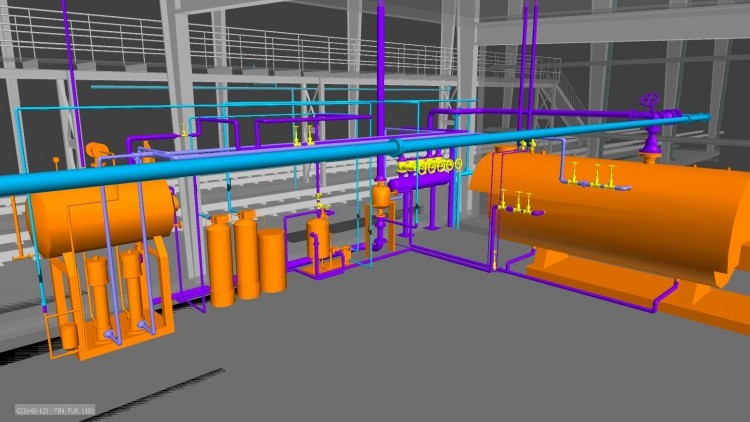
BIM
Saving our customers time and cutting costs with BIM & Pre-Fabrication/ Planning
First developed in 2002, BIM (Building Information Modeling) has been a tool to bridge communication between architects, engineers, and construction. BIM covers many aspects of the design/construction process such as cost, time, performance, and 3D coordination.
Building Information Modeling (BIM) is very similar to what S.M. Lawrence has been doing for years. Since its development, we have used the 3D modeling, 3D virtual coordination, and energy modeling aspects of the BIM process heavily as a tool to predict cost, analyze building/system performance, and improve coordination among the trades.
In early 2013 SML created our Virtual Construction Department in an effort to put more emphasis on the 3D modeling, trade coordination, and pre-fabrication aspects of BIM. The purpose of this team is to build the entire project in a virtual environment before actual construction begins. This can help eliminate many issues before they become problems in the field, generate accurate pre-fabrication for piping/sheet metal/plumbing, and the virtual model itself is used as a very effective communication tool.
The benefits for your project are significant
As construction projects get more and more complex, it’s essential to limit risks and eliminate mistakes before work begins. Our in-house BIM capabilities, Virtual Construction Department, and National BIM Alliance gives you the full benefit of experienced specialists equipped with the latest in technology.
You can count on …
• Streamlined installation, as all major issues are resolved in trade coordination – and that gives you better quality construction
• Accurate construction schedule and materials request from contractors
• Higher quality and lower cost, because prefabrication can take place in a controlled factory environment
• “What if” scenarios, which make it possible to change construction sequencing options, shuffle human resources and fine-tune costs
And even though your project may not be labeled a “BIM job,” we still use many aspects of the BIM process to make what we do even better.


